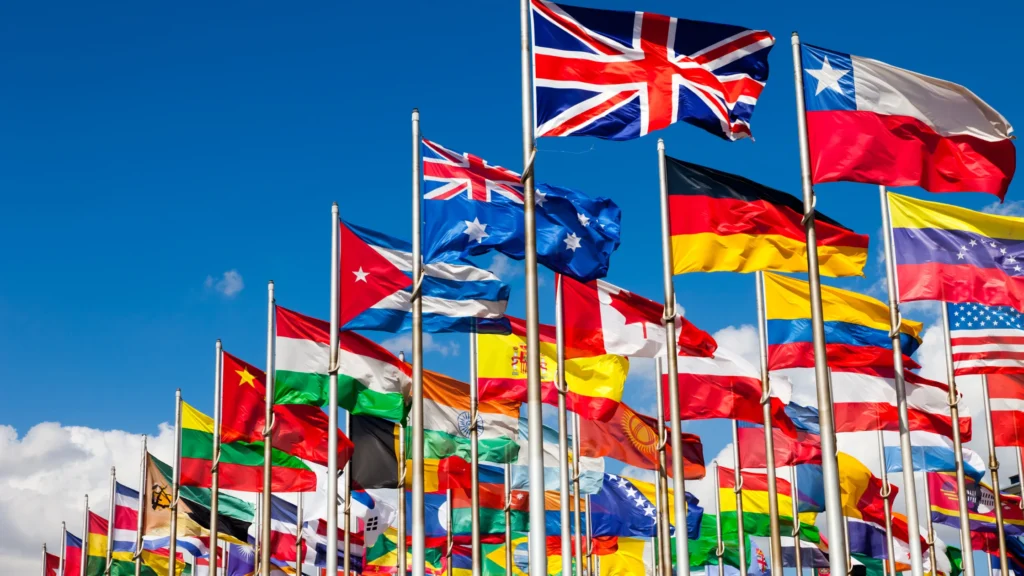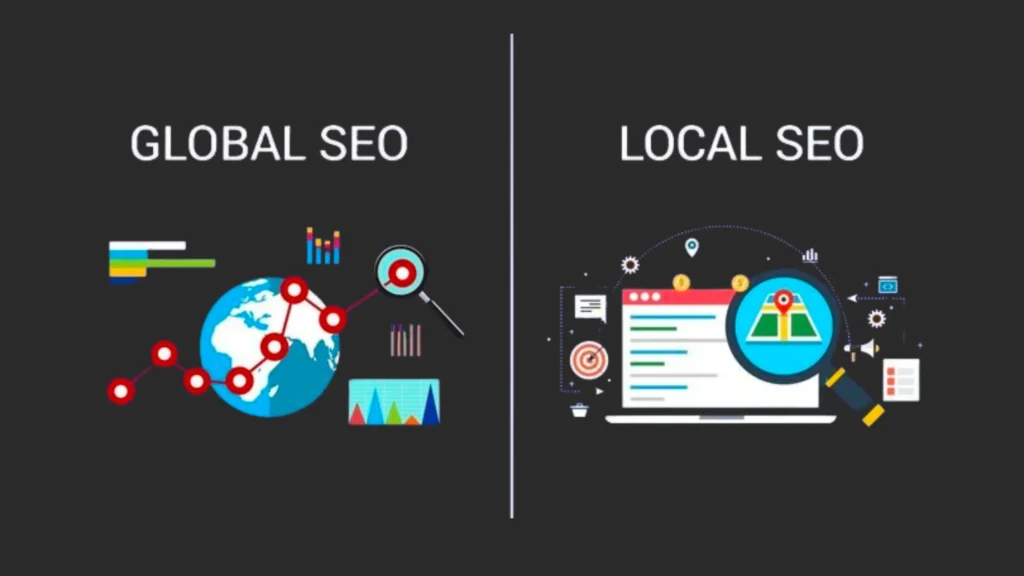Ready to take your business global? You’ve checked all the boxes: your bags are packed, your tickets are booked, and your business strategy is set for international waters. But have you considered if your SEO strategy is equally prepared for the journey?
It feels like hitting a sudden pause, right?
You’re likely here because you have a nagging feeling that something about your global expansion might not be fully managed, especially when it comes to SEO.
You might wonder, “I’ve got SEO down pat at home; why would it be a stumbling block in my global adventure?”
Here’s the deal: SEO is an ever-evolving field. What works domestically may not cut it internationally, and successful strategies can vary significantly from one business to another and from one country to the next.
But don’t worry; there’s no need for unease. The concept of international SEO has been developed specifically to navigate these challenges, and you’re in the right place to master it.
In this guide, we’ll walk you through developing a tailored SEO strategy for international markets, ensuring you’re ready to conquer new territories easily. Here’s what we’ll explore:
What is Internationalization?
International SEO is the key to making your website global. It’s all about making smart decisions and tackling the technical bits to ensure your website speaks to audiences worldwide. It’s a strategy that helps you stand out in the global market, allowing you to plan and compete even before you make your big move.
Let’s pause for a moment. We’re about to dive deep into international SEO, but first, let’s think about what it means to go global. Terms like “global competitiveness” and “internationalization” aren’t just fancy words—they’re crucial concepts that require full engagement, especially regarding SEO.
Going international opens up a world of possibilities. Imagine the opportunities waiting across borders, driven by the allure of new markets and growth. Need a little push? Studies show that companies going global are not just surviving but thriving, showing better productivity and resilience than those that don’t.
So, why should you consider stepping out into the world? Going global comes with challenges, including risks and costs, but the rewards are worth it. It’s about growth, staying competitive, exploring new markets, and returning from tough times.
Ready to take the leap? Here’s what you’ll need:
- A thirst for growth
- A drive to compete on a new level
- A willingness to explore and diversify
- The ability to navigate and learn from different market landscapes
It might sound intimidating, but we aim to empower you. We want you to say, “Yes, I’m ready to take my business global!” And that’s where we come in. We are ready to guide you through your first steps toward conquering the digital world with international SEO. Let’s make your global dream a reality.

What is International SEO?
International SEO is fine-tuning your website or blog so search engines know which countries you’re targeting and which languages you plan to use for your business. Think of it as putting your site on the world map: instead of just drawing visitors from your local area, you’re inviting the world over by catering to various countries and languages.
This might sound complex, but international SEO is more straightforward than it seems. It’s essentially about extending your reach beyond familiar territories.
Why Go Global with SEO?
Imagine your business is flourishing in Mexico, both offline and online. Suddenly, you notice an influx of visitors from Colombia, Spain, Argentina, and more. This sparks an idea: maybe there’s potential to grow in these Spanish-speaking countries.
However, simply replicating your content across these markets isn’t the best move. Success in international SEO isn’t just about ambition. It’s about strategic planning. Your website or blog needs a setup that effectively communicates with search engines, signaling the languages and regions you’re targeting and ensuring your site is geared up to connect with audiences across these countries.
But remember, your approach should be tailored to fit your business type, available resources, customer base, and actual needs. International SEO offers a broad canvas, yet it’s crucial to chart the course best suited to your situation.
International SEO isn’t one-size-fits-all. It’s about discovering the strategies that align with your business goals. While the journey may vary based on numerous factors, certain core principles of international SEO remain steadfast, serving as your guide for global expansion.

Key Principles of International SEO
International SEO is your roadmap to reaching audiences across the globe through the internet. It’s about ensuring your website speaks the right language (literally and figuratively) to the people in different countries. Here’s a breakdown of the basics to get you started:
1. Understanding Regional Keyword Variations
- Exercise: Try searching for your keyword on Google using the domain specific to a country (e.g., google.us for the United States, google.cl for Chile).
- Why? The same keyword can rank differently across countries due to variations in search volume, local language nuances, and user behavior.
- Insight: Regional language differences, search habits, and device usage can significantly impact how and what people search for. Adapting your keywords to fit the local context, not just translating them directly, is crucial.
2. Creating Original, High-Quality Content for Each Country
- Rule: The golden rule of original and high-quality content applies globally.
- Strategy: Understand what constitutes quality content in each target market. Use tools like Google Trends and competitor analysis to gauge what topics are relevant and how to stand out.
- Goal: Gather insights from different regions to craft content that resonates on a local level, ensuring relevance and engagement.
- For further information, read our article on Multilingual Content Marketing.
3. Ensuring Mobile-Friendliness
- Trend: With the global shift towards mobile browsing, ensuring your website is mobile-friendly is non-negotiable.
- Impact: Google prioritizes mobile-friendly sites, so your site must excel on mobile devices for optimal performance and user experience.
4. Implementing the Hreflang Attribute
- What is it? A unique aspect of international SEO, the hreflang attribute tells Google which language and geographical version of a page to display to users.
- How to use: Google provides guidelines and tutorials on implementing hreflang, ensuring users are directed to the most relevant version of your site based on their location and language preferences.
5. Monitoring and Measuring Results
- Continuous Improvement: Like all digital marketing efforts, tracking your international SEO performance is crucial for understanding impact, making informed adjustments, and refining strategies.
- Adaptability: Stay responsive to changes in each target market, including local events and trends, to maintain and enhance your global SEO strategy.
These foundational principles of international SEO demystify optimizing your website for a global audience. By embracing these strategies, you’re not just translating content; you’re transforming your digital presence to meet users’ unique needs and preferences worldwide.
Challenges in International SEO
Venturing into international SEO might seem daunting, but it’s about understanding your goals and navigating through a few common challenges with the right strategies. Let’s make it simple.
Setting Your International SEO Goals
When planning to reach audiences in new countries, think about your goals in three straightforward categories:
- Language Focus: When you’re selling the same product but in a different language area. For example, a company from Brazil selling in Argentina would focus on Spanish, adapting the content to fit the language.
- Country Focus: When you’re targeting a specific country with a different product. For example, the same Brazilian company wants to sell a different product, like watches, in Portugal.
- Hybrid Focus: When your target is a specific language-speaking population within a country. For example, a Japanese company in the USA targeting the Japanese-speaking community there.
Choose your focus based on whether language, country, or both are essential for your expansion. This clarity will guide your next steps.
Common Hurdles in International SEO and How to Overcome Them
- Adapting to Language Nuances: Languages vary, not just in words but in how people use them. Make sure your content resonates with the local dialect and cultural context.
- Local Search Habits: People search differently around the world. Understand these habits to tailor your SEO strategy and ensure your site shows up where your new audience is looking.
- Technical Setup: Use the right technical tools, like hreflang tags for language and region targeting, to help search engines understand who and where you’re targeting.
- Cultural Sensitivity: Be aware of cultural differences that might affect your content’s reception. What works in one country might not work in another.
Overcoming these challenges is about being prepared and adaptable. By clearly defining your objectives and understanding the common hurdles, you’re well on your way to successfully expanding your business internationally with SEO. Remember, it’s about taking those first steps confidently and learning as you grow.

Content and Technical Strategies for a Successful International SEO Strategy
Achieving success in international SEO requires a blend of strategic content marketing and meticulous technical optimization. Here’s how to navigate these smoothly, ensuring your brand effectively crosses borders and resonates with new audiences.
Content Marketing for Global Reach
Assuming you’re versed in Content Marketing and SEO basics, let’s jump straight into tailoring these for an international audience:
- Understanding Your Global Audience
- Persona Development: Adapt your buyer personas for each target country. Use tools like Google Analytics to gather insights on language preferences and potential content themes.
- Keyword Research: Dive into the specifics of each market using tools like SEMRush. Look for keywords that rank well, keeping an eye on search volume and relevance to avoid the pitfalls of differing search habits across regions.
- Scouting the Competition
- Leverage tools to understand who you’re up against in the global arena. Focus on organic competitors since international SEO emphasizes natural search visibility.
- International Keyword Exploration
- Beyond basic research, employ predictive search and competitor analysis to uncover your rivals’ content strategies. Aim to outdo them with superior content.
- Crafting Localized Content
- Tailor your content to the local language and cultural nuances. Avoid direct translations; instead, opt for native speakers to ensure authenticity. Be mindful of regional language variations within the same language to cater to a broader audience.
For further information, read our article on 10 Easy Tips For Effective Content Marketing
The Technical Side of Going Global
The technical aspects differentiate international SEO from its domestic counterpart. Here’s what sets it apart:
- Hreflang Tags: Essential for telling Google which language and country your content is tailored for, ensuring users see the most relevant version.
- Website Structure: Decide whether to use country-specific domains, subdomains, or subdirectories based on your international strategy.
- Local SEO: Optimize for local search engines and directories in your target markets. Each country has its preferences and popular platforms.
Combining Content and Technical Excellence
By marrying insightful content marketing strategies with robust technical SEO practices, you’re setting the stage for international success. Remember, the goal is to make your brand as comfortable and relevant in a new country as it is at home. With careful planning and a deep understanding of your new audience, international SEO becomes an extension of your efforts tailored to a global stage.
This approach ensures that your venture into new markets is not just a translation of your domestic strategy but a thoughtful expansion designed to engage and resonate with international audiences on their terms.
For further information, read our article on Why Off-Page SEO Services Maximize Your Visibility?

Simplifying Technical Aspects of International SEO
When you’re ready to take your website global, understanding the technical side of international SEO is key. Let’s break it down into more manageable parts to make it easier to grasp:
Choosing Your Website’s Global Structure
First, you need to decide how to structure your website to cater to different countries or languages. This choice depends on whether you’re targeting specific countries, languages, or a mix of both. Here are your main options:
- Country-Specific Domains (ccTLDs): These domains end with a country-specific extension, like “.co.uk” for the United Kingdom. They’re great for signaling to search engines and users that your content is tailor-made for a particular country. However, each new country-specific domain starts from scratch in building online authority.
- Subdirectories: This setup involves adding a country or language-specific section to your main website, like “example.com/uk”. It’s a straightforward way to manage content for different regions while maintaining the overall authority of your primary domain.
- Subdomains: Think of subdomains as separate sections of your site that can be dedicated to different regions, like “uk.example.com”. Search engines treat subdomains as distinct from the main domain, so you’ll need to build up their authority independently.
- Generic Top-Level Domains (gTLDs) with Geolocation: These are your .com or .org domains. They don’t inherently target a specific country, but you can use tools like Google Search Console to set a geographic target.
Implementing Hreflang Tags
One of the most critical steps in international SEO is using hreflang tags. These tags tell search engines which language and country your content is intended for, helping to serve the right content to the right users. For example, an hreflang tag can indicate that a particular page is the English version for users in the United States.
International SEO vs. Local SEO
While local SEO focuses on appealing to users in a specific area, international SEO aims to broaden your reach across multiple countries. This difference means you’re looking at:
- More Competition: Going global pits you against various businesses, including big names and brands worldwide.
- More Content Needs: Catering to a global audience requires more content, tailored to each region’s cultural and language nuances.
- Higher Costs: A broader scope means a bigger budget, not just for content creation but also for research, team expansion, and technical adjustments.
By understanding these technical aspects and preparing accordingly, you can effectively expand your online presence to new markets worldwide, ensuring your website is accessible and relevant to international audiences.

Top Tools to Power Up Your International SEO Strategy
Embarking on international SEO can seem daunting, but it’s manageable and even exciting with the right tools. Here’s a quick guide to some powerful tools that can simplify your global SEO efforts and keep you on the path to success.
Google Analytics
Google Analytics is indispensable for any SEO strategy, providing insights into your website’s global performance. It’s essential for tracking visitor behavior, understanding which countries your traffic comes from, and fine-tuning your approach based on real data.
SEMRush
SEMRush is a powerhouse for managing your international SEO campaign. It helps you track your search engine rankings, identify keywords, analyze competitors’ strategies, and more. It’s like having a Swiss Army knife for SEO, ensuring you’re equipped for success on the global stage.
HubSpot
HubSpot streamlines on-page SEO and keeps your website in top shape as it grows. It’s particularly useful for its live SEO recommendations, making optimizing your content for international audiences easier without missing a beat.
Moz
For regular SEO health checks, Moz is your go-to. It simplifies conducting comprehensive audits, making sure your site stays optimized no matter where in the world you’re targeting. Plus, it’s great for digging into keyword research and backlink analysis, ensuring you’re always a step ahead.
Wrapping It Up
Deciding to take your business global is a big step, but as we’ve seen, it’s built on the same SEO principles you’re already familiar with. We’ve debunked the myths and showed that with some organization and the right tools, international SEO isn’t just doable—it’s a viable path to expanding your brand’s reach worldwide.
Remember, starting with a clear plan, understanding your international audience, and leveraging these essential SEO tools can transform the daunting task of global expansion into a structured and successful strategy.
So, are you ready to take your brand to the next level? Let our team at Partner Digital equip you with these tools to make your international SEO journey successful. If you want to boost your local and international marketing strategies, consider consulting with us. We can tailor solutions to elevate your results even further.
Schedule a quick FREE Call with us to discover how to make your global marketing strategies resonate across diverse cultural landscapes.
FAQs on International SEO
How will an international SEO consultant help me?
An international SEO consultant brings expertise and specialized knowledge to navigate the complex landscape of global search engine optimization. They can help you by performing market research to identify which countries offer the best opportunities for your business, advising on the most effective website structure for your international goals, and implementing hreflang tags correctly to avoid common pitfalls.
Additionally, they can guide the localization process to ensure your content resonates with each target market, optimize your site for local search engines beyond Google, and develop a tailored link-building strategy to improve your site’s authority in target regions. With their experience, they can also foresee potential challenges and provide strategies to overcome them, ensuring a smoother expansion into international markets.
How do I determine if my business is ready for international SEO?
Your business might be ready for international SEO if you’ve noticed demand for your products or services from users in other countries or if market research indicates untapped potential in specific international markets.
Other indicators include having the resources to support localization (including translation and adaptation of content), the ability to provide customer service in different languages, and the logistical capacity to ship products or deliver services internationally.
Additionally, expanding internationally could be a logical next step if your domestic market is saturated and you’re looking for growth opportunities. Assessing your website’s international traffic using tools like Google Analytics can also offer insights into potential markets where your business already has a foothold.
What’s the best way to handle multiple languages on my website?
The best way to handle multiple languages on your website is to create separate, fully localized versions of your content for each target language or region.
This involves translating the text and adapting cultural references, currency, units of measure, and any region-specific information to resonate with the local audience. Implementing hreflang tags correctly is crucial to helping search engines understand the language and regional targeting of each page and ensuring that users are directed to the version most relevant to them.
Depending on your business model and resources, you may choose to organize the different language versions of your site using subdirectories, subdomains, or country-code top-level domains (ccTLDs).
How important is local hosting for international SEO?
Local hosting can positively impact site speed and, consequently, user experience and SEO rankings in the target country. Hosting your site closer to your target audience can reduce page load times, a significant factor in user satisfaction and search engine rankings.
However, the importance of local hosting can vary depending on several factors, including the global distribution capabilities of your content delivery network (CDN) and the specific requirements of your target market’s search engines.
While not always critical, local hosting can benefit an international SEO strategy, especially for markets with less sophisticated internet infrastructure or where local search engines prioritize locally hosted websites.
Can I use automated translations for my website content?
While automated translations can provide a quick and cost-effective way to translate your website content, they often lack the nuance and cultural sensitivity required for effective localization.
Automated translations may result in grammatical errors, cultural misunderstandings, or awkward phrasing that can alienate your target audience and harm your brand’s credibility.
For the best results, it’s advisable to use professional translation services or native speakers who can not only translate the text but also adapt your content to accurately reflect local cultural norms and preferences. That said, automated translations can be a starting point for translation work, which should then be reviewed and refined by language and cultural experts.
How do I choose between ccTLD, subdomain, and subdirectory?
Choosing between ccTLD (country-code top-level domain), subdomain, and subdirectory depends on your business goals, resources, and each option’s specific SEO and user experience implications. ccTLDs (e.g., .uk, .fr) are beneficial for targeting specific countries and can enhance local user trust and search engine ranking in those regions but require a higher investment in maintaining separate websites.
Subdomains (e.g., fr.example.com) allow for some separation of content and can be easier to manage than ccTLDs, but they may not carry the same local SEO benefits. Subdirectories (e.g., example.com/fr/) are the easiest to manage and maintain link equity under a single domain but may offer slightly less geo-targeting power than ccTLDs.
Your choice should balance SEO effectiveness, user perception in your target markets, and operational feasibility.